Iranian Popular Art
Representing Iranian culture and history and intended for a Persian market, these playing cards were designed by V. Romanowski de Boncza, ordered by the Iranian government playing card monopoly at the time and printed by Thomas De la Rue & Co., Ltd, c.1937.

Iranian Popular Art Playing Cards
Representing Iranian culture and history and intended for a Persian market, these playing cards were designed by V. Romanowski de Boncza. The deck was commissioned by the Royal Iranian Government Playing Card Monopoly (Ministry of Finance) at the time and printed by De la Rue & Co., Ltd, c.1937. The double-ended court figures are wearing exotic Persian costumes from different dynasties.
Click to see: box ♣ reverse ♥ extra card.

Above: 'Iranian' playing cards designed by V. Romanowski de Boncza and first printed by De la Rue in c.1937. The cards incorporate Iranian motifs and there appear to have been more than one back design as well as a patience sized version; the cards were also re-printed by Fournier in c.1962 and again at a later date with some modifications. Images courtesy Barney Townshend and Mehdi Soozande.
Reference:
Collett, Maurice: "Iranian Playing Cards" in the Newsletter of the English Playing Card Society, Vol.23 No.83, June 2005, pp.45-47.
Update from Peter Burnett
I'm attaching scans of a Fournier reprint which clearly shows the differences/modifications to the court cards (e.g KS becomes KH; QH becomes QD; new spade suit, etc.) Fournier's 1962 reprint was not a slavish copy of the De La Rue original. Many of the cards were given a 'lighter' look, e.g., KC - eyes and beard lightened, crown slightly cropped; JD - outline of chin lightened and face generally more pink. A later reprint is from c.1979 with the title "Historic Iranian Designs". The single pack also contained a leaflet►


Above: Fournier reprint of Iranian playing cards. Image courtesy Peter Burnett.
What are the differences between the two reprints?
The Hearts courts and Ace were switched to Diamonds; the Diamonds courts and Ace were dropped completely; the Spades courts and Ace were switched to Hearts; the Clubs courts and Ace remained the same. Totally new designs were introduced for the 1979 Spades courts and Ace. The 1962 pack was on slightly creamier card than the 1979 one. The corners were more rounded and had more gilding than on the later pack. The 1962 pack lies flat, whereas the 1979 pack has a tendency to curve slightly over time. On the 1962 AS, one can read "MADE IN SPAIN" just above the design, whereas this is absent from the 1979 AH. On the 4C, the number '419' has been added at the foot of the design in the 1979 reprint. The back design remained the same (mine is red). Lastly, the design of the packing/control slip changed from an elaborate to a simple one - R.S.

Above: Historic Iranian (1962 Aces above, 1979 Aces below). Images and notes courtesy Roddy Somerville.

By Barney Townshend
Member since October 06, 2015
Retired Airline Pilot, interested in: Transformation Playing Cards, Karl Gerich and Elaine Lewis. Secretary of the EPCS. Treasurer of the IPCS.
Trending Articles
Popular articles from the past 28 days
Related Articles

Woodblock and Stencil Joker
A limited edition art print of the 1984 woodblock joker.
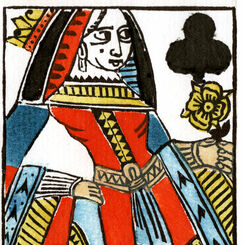
Woodblock and Stencil Queen of Clubs
A limited edition art print of the Queen of Clubs 1984 woodblock joker.
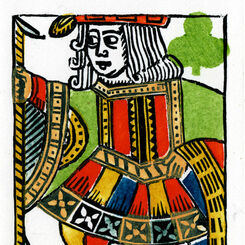
Woodblock and Stencil Jack of Clubs
A limited edition art print of the Jack of Clubs 1984 woodblock joker.

Woodblock and Stencil Jack of Hearts
A limited edition art print of the Jack of Hearts 1984 woodblock joker.
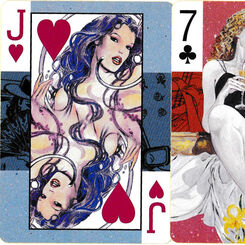
Manara: baraja de poker
Exotic illustrations by Italian comic book artist and writer Milo Manara.
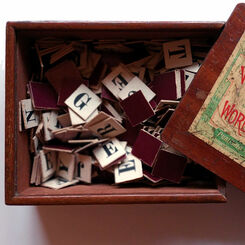
Word Making and Word Taking
How crossword and spelling games became popular.

Alice in Wonderland
Alice in Wonderland collector’s edition with illustrations of characters from the film, published by...
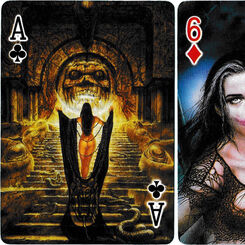
Women by Royo
‘Women by Royo’ erotic playing cards published by Heraclio Fournier, Spain, 2001.

Monuments de Paris
‘Monuments de Paris’ souvenir playing cards produced by Heraclio Fournier, c.1964.

Bibaraja
Amusing designs of boys as circus performers by Alberto Muñiz Sánchez.
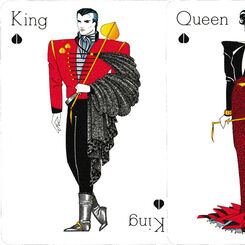
Paco Lobo
Highly original and striking designs by Paco Lobo for the fashion house of the same name.
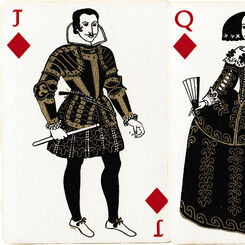
Loewe: Moda Europea Siglo XVII
Luxury pack for the Spanish fashion house Loewe, with 17th century costume designs by Margot Hamilto...

Toros: De El Cordobés a Espartaco
Publicity pack for the Spanish newspaper Ya with caricatures of famous bullfighters by Fernan...

Baraja de Alava
55 different paintings by Emilio Lope depicting the history and culture of Vitoria and the province ...
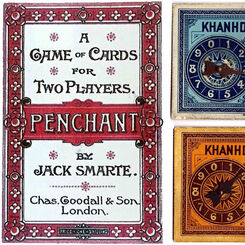
The Search for New Games in the late 19th century
A few new games survived and are still around today; most came and went and are only witnessed in th...

Postak – Las Postas
‘Postak - Las Postas’ playing cards commemorating the history of the Basque postal service, Spain, 1...
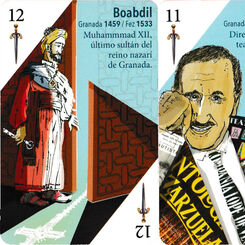
Naipes de Personajes Granadinos
Forty famous men and women with links to Granada, on a pack designed by Rubén Garrido.

Âs Nas playing cards with box
Hand made cards from Persia
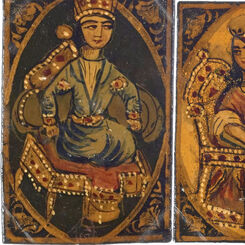
Âs Nas
Âs Nas type playing cards from Persia.
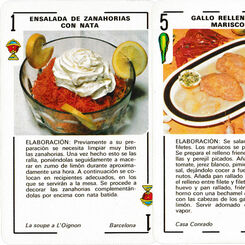
Bankunión playing cards
Ingredients and recipes for 24 dishes from different regions of Spain.
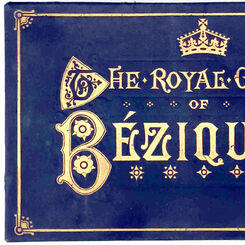
The Evolution of Bezique boxed sets, 1869 to 1990
The first company to register Bezique materials with Stationers’ Hall was Josh Reynolds & Son in Sep...

Goodall 1879-1880 Sample Book
Complete contents of a sample book by Goodall & Sons

De La Rue 1932-1933 Sample Book of Advertising cards
Complete contents of a sample book of advertising cards by De La Rue
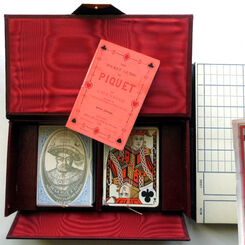
Card Game Items and contemporary advertisements
It is often difficult to identify the origin, manufacturer and date of a card game boxed set and oth...

Souvenir Playing Cards of Egypt
55 different photographic views of Egypt in full colour.

Tarot of the Thousand and One Nights (1001 Nights Tarot)
This tarot deck captures the idealised Eastern world's magic from the eighteenth and nineteenth cent...
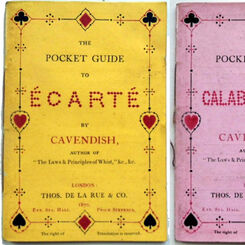
De La Rue Pocket Guides
The 19th Century saw the production, by all of the major companies, of pocket guides or “mini-books”...
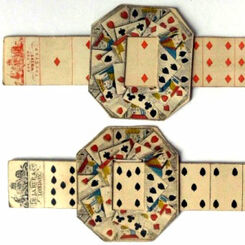
A New Look at the Evolution of Whist Markers and Gaming Counters
This article aims to illustrate the evolution of whist and gaming counters from the 18th century to ...

What can we learn from mini-booklet advertisements?
Over the years I have collected a large number of mini-booklets and pocket guides offering rules and...
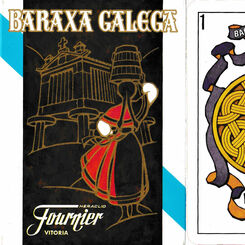
Baraxa Galega
Baraxa Galega designed by F. Perez Llamosas and published by Naipes Heraclio Fournier, 1983.

El Desnudo en el Arte
The Nude in Art / El Desnudo en el Arte, Spain, 1977 (reprint 1990)

Baraja Fiesta Taurina
‘Baraja Fiesta Taurina’ bullfight playing cards published by Heraclio Fournier, Spain, 1975.

Secretos de Oriente
Secrets of the Far East playing cards featuring the designs of Violeta Monreal , Spain, c. 1991.
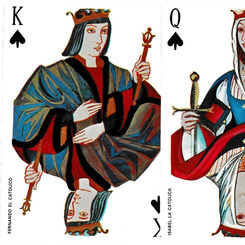
España Imperial
España imperial / Imperial Spain playing cards with artwork by Serny, published by Heraclio Fournier...
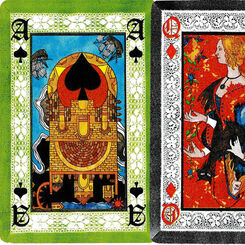
Medieval Life playing cards
‘Medium Aevum’ (Medieval Life) playing cards designed by Violeta Monreal, published by Heraclio Four...
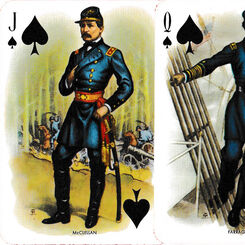
American Civil War playing cards
American Civil War centennial playing cards designed by Teodoro N. Miciano and published by Fournier...
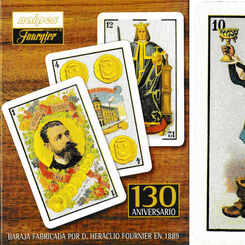
Naipes Heraclio Fournier 130th Anniversary
Baraja conmemorativa del 130 aniversario de naipes Heraclio Fournier (1868-1998) Spain, 1998.
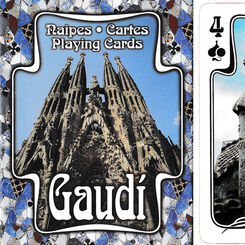
Gaudí playing cards
Gaudí playing cards with photography by Ramon Manent, Spain, 2002.
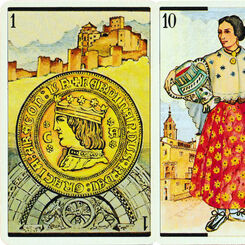
Baraja Aragonesa
Celebrating the costumes, architecture, coins and crafts of Aragon in Spain, with designs by Raúl Ro...
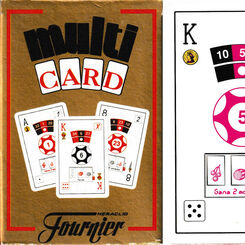
Multicard
A Spanish-suited pack with multiple uses including roulette and dice.
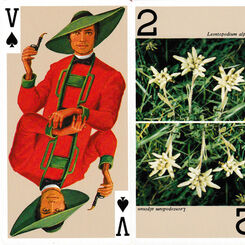
The New Game of Tarot (or Tarock)
Regional costumes and alpine flora on a French Tarot game pack marking 600 years of playing cards in...
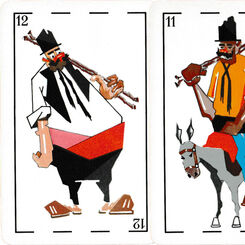
Baraja Canaria
Comic courts and non-standard suits representing the Canary Islands, with designs by Eduardo Millare...

Festa Major de Vilafranca 1988
Colourful figures associated with the annual festival held in Vilafranca, Catalonia.

Crystal Time
Colourful and attractive designs by Violeta Monreal, inspired by stained glass through the ages.


